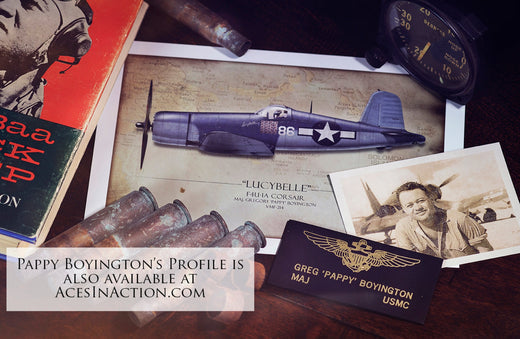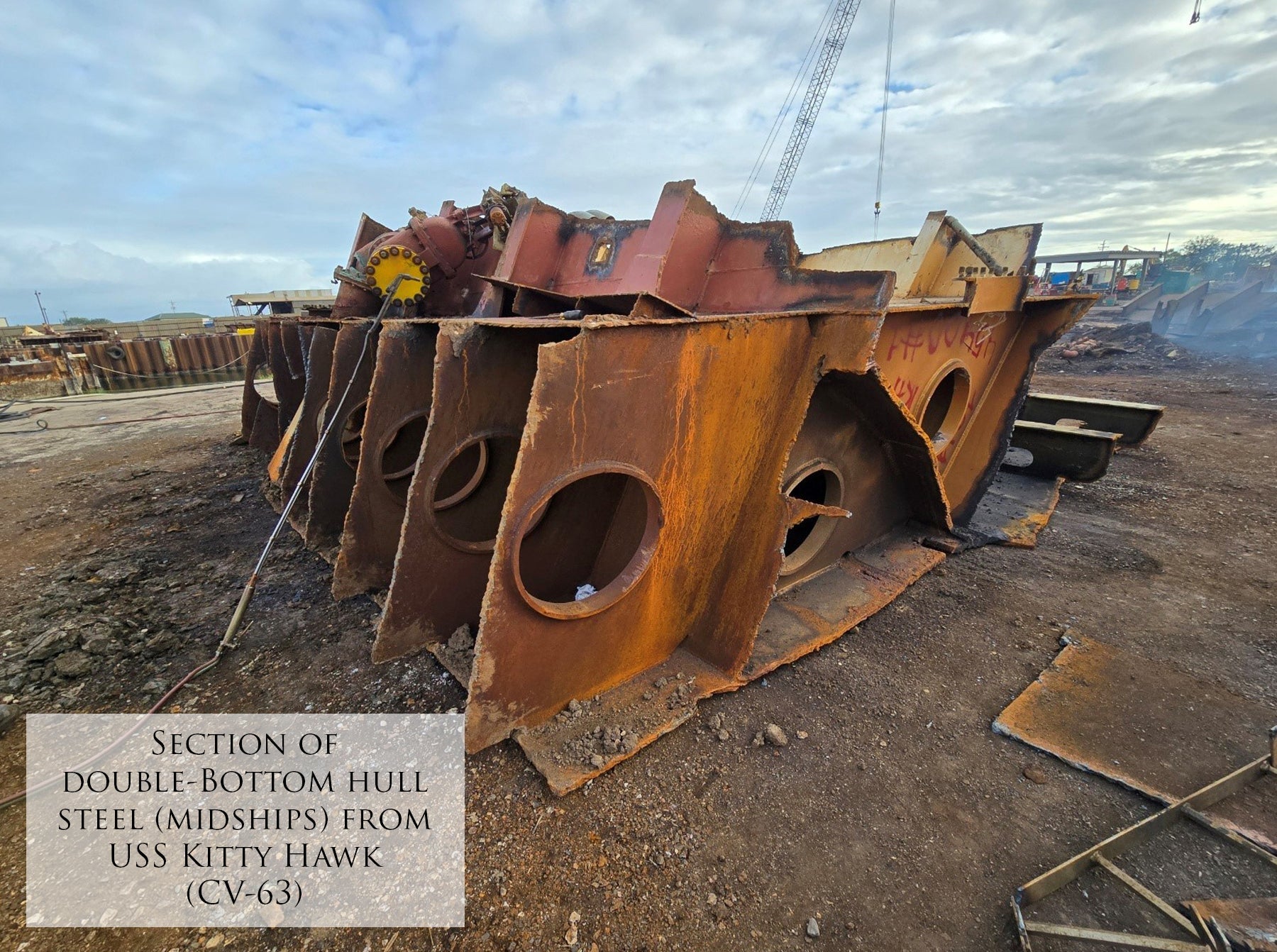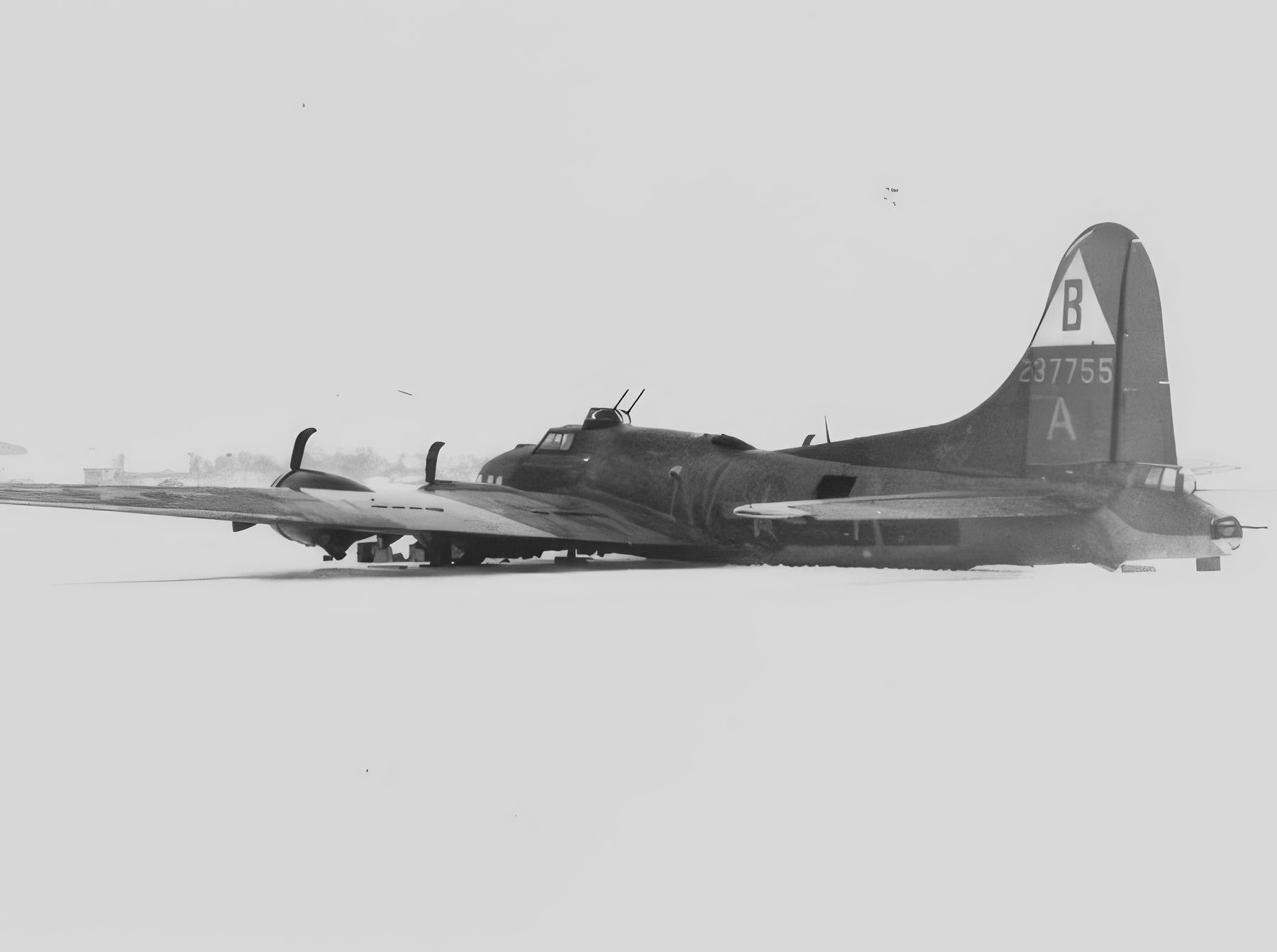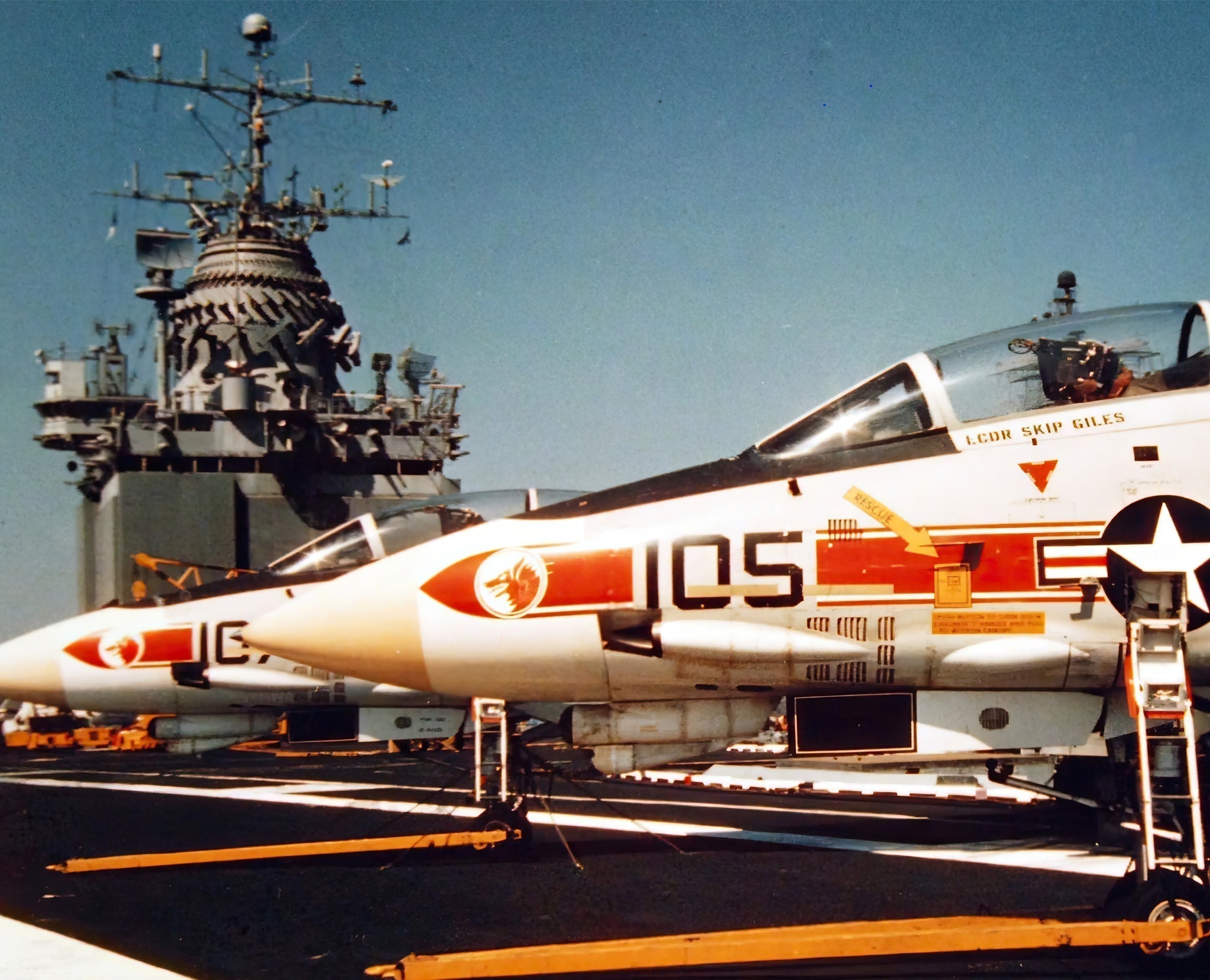This Fine Art Print by Artist Craig Tinder honors the men and machines of the famed Black Sheep Squadron, led by none other than Gregory "Pappy" Boyington. This Limited Edition Canvas Print includes an actual fragment from the aluminum wing skin of a Corsair.
Details About the RELIC:
This aluminum fragment, once part of the starboard wing of a Goodyear-built FG-1D Corsair, Aircraft No. 92095, tells a story of service spanning decades and two significant conflicts. The wing panel, removed during restoration in 2022, came from beneath the iconic American Star emblem and was provided to Aces In Action in order to complete a commission art piece to commemorate its historical journey.
About Corsair 92095
First taken into service by the United States Navy in April 1945, Corsair No. 92095 was assigned to Bombing Fighting Squadron 80 (VBF-80) aboard the USS Boxer (CV-21) during the final months of World War II. Known for its rugged design and powerful performance, the F4U Corsair played a pivotal role in both air-to-air combat and ground attack missions in the Pacific theater.
 Corsair panel underwing panel
Corsair panel underwing panel
 Backside of panel
Backside of panel
 Sample Corsair relic used in art piece
Sample Corsair relic used in art piece
After the war, in 1957, the aircraft was transferred to the Salvadoran Air Force (Fuerza Aérea Salvadoreña) and redesignated FAS-220 as part of the U.S. Military Assistance Program. This Corsair saw combat once again during the 1969 Football War (also known as the Soccer War), a brief conflict between El Salvador and Honduras. On 14 July 1969, Salvadoran forces, including FAS-220, attacked Honduran airfields using a mix of aircraft, including P-51 Mustangs and C-47 Skytrains. The Corsair was involved in these operations and even sustained minor anti-aircraft fire damage to its port wing.
Following its military service, Corsair No. 92095 was placed on static display at the Evergreen Air Museum. In recent years, it has been undergoing restoration at Airpower Unlimited in Jerome, Idaho, to return the aircraft to flying status. This relic, preserved from the original airframe, serves as a testament to the Corsair’s enduring legacy, from the Pacific battles of WWII to its role in a 20th-century regional conflict.
The Story Behind the Print:
Maj. Gregory "Pappy" Boyington was a renowned Marine fighter pilot ace, best known for his leadership of VMF-214, the "Black Sheep Squadron," during World War II. Before leading the Black Sheep, Boyington flew with General Claire Chennault's famed "Flying Tigers," the American Volunteer Group that supported China against Japanese forces in the early days of the war. His aggressive flying style and skill in aerial combat quickly earned him a reputation as a formidable pilot.
 Maj. Gregory "Pappy" Boyington - photo by Artist, Craig Tinder
Maj. Gregory "Pappy" Boyington - photo by Artist, Craig Tinder
On one of his most fateful missions, Boyington's squadron was heavily outnumbered during a battle over Rabaul. His 30 American fighters faced more than 70 Japanese aircraft. Despite the odds, Boyington fought bravely but was ultimately shot down. He was captured and spent the next 20 months as a prisoner of war in a Japanese prison camp. Boyington was liberated at the end of the war and returned home a hero.
With 26 confirmed enemy victories to his name, Boyington became one of the top American aces of World War II. In recognition of his courage and leadership, he was awarded both the Medal of Honor and the Navy Cross. Boyington's legacy as the commander of the Black Sheep Squadron remains one of the most celebrated stories of the Pacific theater, embodying the resilience and fighting spirit of the Marine Corps.
Learn more about Did an F4U Corsair Shoot Down a MiG-15? Click Here
To purchase or see similar items, visit here.
Commissioned by Museums, Treasured by Collectors





Share:
Wings of the Jolly Rogers, the story behind "Fear the Bones"
Wolfpack Survivor, the story behind "Red Devil"